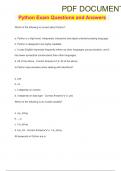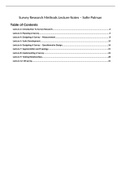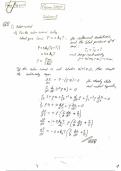Mandatory articles International Strategy (IS)
Topic 1 – Theoretical foundations of IS Topic 2 – Where do MNE’s invest?
Article Page Article Page
1.1 – Rugman & Verbeke, 1992 2 2.1 – Alcácer & Chung, 2014 12
1.2 – Cantwell et al., 2010 4 2.2 – Benito & Gripsrud, 1992 14
1.3 – Porter, 1986 7 2.3 – Demirbag & Glaister, 2010 16
1.4 – Ghemawat, 2008 10 2.4 – Laamanen et al., 2012 18
Topic 3 – How do MNE’s invest? Topic 4 – When do MNE’s invest?
Article Page Article Page
3.1 – Brouthers & Hennart, 2007 20 4.1 – Lieberman & Montgomery, 1988 29
3.2 – Meyer et al., 2009 22 4.2 – Kerin et al., 1992 31
3.3 – Anand & Delios, 2002 25 4.3 – Gaba et al., 2002 35
3.4 – Gubbi et al., 2010 27 4.4 – Frynas et al., 2006 37
Topic 5 – Multinationality & Performance
Article Page
5.1 – Lu & Beamish, 2004 40
5.2 – Vermeulen & Barkema, 2002 42
5.3 – Chang & Rhee, 2011 44
5.4 – Hennart, 2007 46
,1.1 – Rugman & Verbeke, 1992
A note on the transnational solution and the transaction cost theory of
multinational strategic management
1. What is the main idea of the article?
→ Abstract – Introduction – Conclusion
The main idea of Rugman & Verbeke (1992) is that they build on the transaction cost theory and assess
to what extent the results of Bartlett & Ghoshal’s (1989) work can be incorporated in this. The two
dimensions of Bartlett & Ghoshal are global integration and local responsiveness. The transnational
solution is able to develop both location-bound and non-location-bound FSA’s and makes a dual use
of CSA’s home and host countries. However, the transnational solution is not a new theory of MNE
strategy. Many of its features fit very well with the transaction cost theory.
2. What is the context and goal of this study?
→ Assumptions
The transaction cost theory is the core of multinational strategic management. The authors assess to
what extent the results of Bartlett & Ghoshal’s (1989) work can be incorporated in this. Bartlett &
Ghoshal identify three (partly overlapping) trends in the operations of MNE’s: (1) foreign subsidiaries
are set up as replicas of the parent company, (2) stimulating firms to develop strategies of national
responsiveness to become multinational firms, and (3) globalization for economic, technological, and
market reasons. Their research resulted in four types of strategy based on global integration and local
responsiveness: (1) international strategy, low-low, (2) global strategy, high-low, (3) multidomestic
strategy, low-high, and (4) transnational strategy, high-high.
3. Type of research and methodology
→ Type of research: conceptual/empirical/literature review
→ Methodology
It is a conceptual paper.
The build-up of the article is as follow: (1) transaction cost theory, (2) extension of transaction cost
theory, (3) transaction cost interpretation of Bartlett & Ghoshal, and (4) transaction cost theory and
the transnational solution.
4. What are the takeaways?
According to Dunning, there are three elements of the transaction theory (the OLI-paradigm):
1. Firm-specific advantages (FSA’s), or ownership advantages. Includes proprietary know-how
and transactional advantages.
2. Country-specific advantages (CSA’s), or location advantages. Includes benefits associated with
locating certain activities in particular countries.
3. Internalization advantages. Includes the relative benefits associated with different entry
modes.
2
,From the perspective of strategic management there are two main problems with the transaction cost
framework by Dunning, in terms of the use of its analysis of FSA’s and CSA’s:
1. The assumption that FSA’s are in principle non-location bound (NLB). The authors propose that
two types of FSA’s are distinguished: NLB FSA’s (FSA’s that can be exploited globally) and LB
FSA’s (FSA’s that can only be used in a particular location or set of location).
2. The assumption that CSA’s are in principle external. CSA’s of other countries may be used in a
leveraged way when contributing to the development of new FSA’s.
Based on these problems and the four types of strategy identified by Bartlett & Ghoshal, the authors
propose the following model. The transnational solution is able to develop both LB and NLB FSA’s and
makes a dual use of CSA’s home and host countries.
The two criteria of Bartlett & Ghoshal can also be linked to the transaction cost theory:
- Global integration: reflects the perceived potential of an FSA.
- Local responsiveness: reflects the perceived potential of a CSA.
The transnational solution is not a new theory. Many of its features fit very well with the transaction
cost-based theory. The transaction cost interpretation of Bartlett & Ghoshal provides useful
explanations and predictions of patterns in multinational strategic management.
5. What are the implications?
The transnational solution is not a new theory, but rather an interpretation of the transaction cost
theory.
6. Key constructs
-
3
, 1.2 – Cantwell et al., 2010
An evolutionary approach to understanding international business
activity: the co-evolution of MNE’s and the institutional environment
1. What is the main idea of the article?
→ Abstract – Introduction – Conclusion
The main idea of Cantwell et al. (2010) is that this paper provides an overview of what institutions
mean, what they are, and why they are so important in discussing international business. It examines
the co-evolution of MNE activities and institutions. The analysis draws on North (institutions) and
Nelson (co-evolution of technology and institutions). They find that firm-level creativity and
institutional entrepreneurship may lead to co-evolution with the environment.
2. What is the context and goal of this study?
→ Assumptions
The authors argue that institutions play a determining role in shaping MNE activity and decisions.
However, only looking at the institutional level is not enough. It neglects the role of the MNE.
Therefore, the paper examines the co-evolution of MNE activities and institutions external and internal
to the firm. The co-evolutionary theory argues that there is no clear choice between managerial
adaptation/intentionality (MNE) and environmental selection (institution), but that they occur
simultaneously and influence each other. In order to explain the co-evolutionary theory, the authors
use the theories of North (on institutions) and Nelson (on the co-evolution of technology and
institution) for that. Nelson argues that institutions are patterns of human interaction that relate to
the division of labor and the mode of coordination of human activity (social technology). Institutions
arise when these social technologies become institutionalized or standardized (so that is the
mechanism for institutional change). North defines institutions as formal rules (e.g. laws and
regulations) and informal constraints (e.g. norms of behavior). Institutions set the ‘rules of the game’.
Institutions change when the content or character of one of those changes.
3. Type of research and methodology
→ Type of research: conceptual/empirical/literature review
→ Methodology
It is a conceptual paper. They build the theory through an evaluation of significant trends in IB. This is
called an appreciative theory.
The build-up of the article is as follow: (1) key propositions, (2) institutions and the evolution of MNE
activity, and (3) process to co-evolution.
4. What are the takeaways?
The authors develop three propositions linking the evolutionary and institutional views:
1. The institutional aspect of the environment for IB activity have become more important for
MNE’s over time, especially since the arrival of the knowledge-based economy and
contemporary globalization.
2. The rising significance of non-ergodic uncertainty has placed more emphasis on the
development of new institutions that help to better manage or reduce uncertainty in the
course of economic development.
4
Topic 1 – Theoretical foundations of IS Topic 2 – Where do MNE’s invest?
Article Page Article Page
1.1 – Rugman & Verbeke, 1992 2 2.1 – Alcácer & Chung, 2014 12
1.2 – Cantwell et al., 2010 4 2.2 – Benito & Gripsrud, 1992 14
1.3 – Porter, 1986 7 2.3 – Demirbag & Glaister, 2010 16
1.4 – Ghemawat, 2008 10 2.4 – Laamanen et al., 2012 18
Topic 3 – How do MNE’s invest? Topic 4 – When do MNE’s invest?
Article Page Article Page
3.1 – Brouthers & Hennart, 2007 20 4.1 – Lieberman & Montgomery, 1988 29
3.2 – Meyer et al., 2009 22 4.2 – Kerin et al., 1992 31
3.3 – Anand & Delios, 2002 25 4.3 – Gaba et al., 2002 35
3.4 – Gubbi et al., 2010 27 4.4 – Frynas et al., 2006 37
Topic 5 – Multinationality & Performance
Article Page
5.1 – Lu & Beamish, 2004 40
5.2 – Vermeulen & Barkema, 2002 42
5.3 – Chang & Rhee, 2011 44
5.4 – Hennart, 2007 46
,1.1 – Rugman & Verbeke, 1992
A note on the transnational solution and the transaction cost theory of
multinational strategic management
1. What is the main idea of the article?
→ Abstract – Introduction – Conclusion
The main idea of Rugman & Verbeke (1992) is that they build on the transaction cost theory and assess
to what extent the results of Bartlett & Ghoshal’s (1989) work can be incorporated in this. The two
dimensions of Bartlett & Ghoshal are global integration and local responsiveness. The transnational
solution is able to develop both location-bound and non-location-bound FSA’s and makes a dual use
of CSA’s home and host countries. However, the transnational solution is not a new theory of MNE
strategy. Many of its features fit very well with the transaction cost theory.
2. What is the context and goal of this study?
→ Assumptions
The transaction cost theory is the core of multinational strategic management. The authors assess to
what extent the results of Bartlett & Ghoshal’s (1989) work can be incorporated in this. Bartlett &
Ghoshal identify three (partly overlapping) trends in the operations of MNE’s: (1) foreign subsidiaries
are set up as replicas of the parent company, (2) stimulating firms to develop strategies of national
responsiveness to become multinational firms, and (3) globalization for economic, technological, and
market reasons. Their research resulted in four types of strategy based on global integration and local
responsiveness: (1) international strategy, low-low, (2) global strategy, high-low, (3) multidomestic
strategy, low-high, and (4) transnational strategy, high-high.
3. Type of research and methodology
→ Type of research: conceptual/empirical/literature review
→ Methodology
It is a conceptual paper.
The build-up of the article is as follow: (1) transaction cost theory, (2) extension of transaction cost
theory, (3) transaction cost interpretation of Bartlett & Ghoshal, and (4) transaction cost theory and
the transnational solution.
4. What are the takeaways?
According to Dunning, there are three elements of the transaction theory (the OLI-paradigm):
1. Firm-specific advantages (FSA’s), or ownership advantages. Includes proprietary know-how
and transactional advantages.
2. Country-specific advantages (CSA’s), or location advantages. Includes benefits associated with
locating certain activities in particular countries.
3. Internalization advantages. Includes the relative benefits associated with different entry
modes.
2
,From the perspective of strategic management there are two main problems with the transaction cost
framework by Dunning, in terms of the use of its analysis of FSA’s and CSA’s:
1. The assumption that FSA’s are in principle non-location bound (NLB). The authors propose that
two types of FSA’s are distinguished: NLB FSA’s (FSA’s that can be exploited globally) and LB
FSA’s (FSA’s that can only be used in a particular location or set of location).
2. The assumption that CSA’s are in principle external. CSA’s of other countries may be used in a
leveraged way when contributing to the development of new FSA’s.
Based on these problems and the four types of strategy identified by Bartlett & Ghoshal, the authors
propose the following model. The transnational solution is able to develop both LB and NLB FSA’s and
makes a dual use of CSA’s home and host countries.
The two criteria of Bartlett & Ghoshal can also be linked to the transaction cost theory:
- Global integration: reflects the perceived potential of an FSA.
- Local responsiveness: reflects the perceived potential of a CSA.
The transnational solution is not a new theory. Many of its features fit very well with the transaction
cost-based theory. The transaction cost interpretation of Bartlett & Ghoshal provides useful
explanations and predictions of patterns in multinational strategic management.
5. What are the implications?
The transnational solution is not a new theory, but rather an interpretation of the transaction cost
theory.
6. Key constructs
-
3
, 1.2 – Cantwell et al., 2010
An evolutionary approach to understanding international business
activity: the co-evolution of MNE’s and the institutional environment
1. What is the main idea of the article?
→ Abstract – Introduction – Conclusion
The main idea of Cantwell et al. (2010) is that this paper provides an overview of what institutions
mean, what they are, and why they are so important in discussing international business. It examines
the co-evolution of MNE activities and institutions. The analysis draws on North (institutions) and
Nelson (co-evolution of technology and institutions). They find that firm-level creativity and
institutional entrepreneurship may lead to co-evolution with the environment.
2. What is the context and goal of this study?
→ Assumptions
The authors argue that institutions play a determining role in shaping MNE activity and decisions.
However, only looking at the institutional level is not enough. It neglects the role of the MNE.
Therefore, the paper examines the co-evolution of MNE activities and institutions external and internal
to the firm. The co-evolutionary theory argues that there is no clear choice between managerial
adaptation/intentionality (MNE) and environmental selection (institution), but that they occur
simultaneously and influence each other. In order to explain the co-evolutionary theory, the authors
use the theories of North (on institutions) and Nelson (on the co-evolution of technology and
institution) for that. Nelson argues that institutions are patterns of human interaction that relate to
the division of labor and the mode of coordination of human activity (social technology). Institutions
arise when these social technologies become institutionalized or standardized (so that is the
mechanism for institutional change). North defines institutions as formal rules (e.g. laws and
regulations) and informal constraints (e.g. norms of behavior). Institutions set the ‘rules of the game’.
Institutions change when the content or character of one of those changes.
3. Type of research and methodology
→ Type of research: conceptual/empirical/literature review
→ Methodology
It is a conceptual paper. They build the theory through an evaluation of significant trends in IB. This is
called an appreciative theory.
The build-up of the article is as follow: (1) key propositions, (2) institutions and the evolution of MNE
activity, and (3) process to co-evolution.
4. What are the takeaways?
The authors develop three propositions linking the evolutionary and institutional views:
1. The institutional aspect of the environment for IB activity have become more important for
MNE’s over time, especially since the arrival of the knowledge-based economy and
contemporary globalization.
2. The rising significance of non-ergodic uncertainty has placed more emphasis on the
development of new institutions that help to better manage or reduce uncertainty in the
course of economic development.
4










